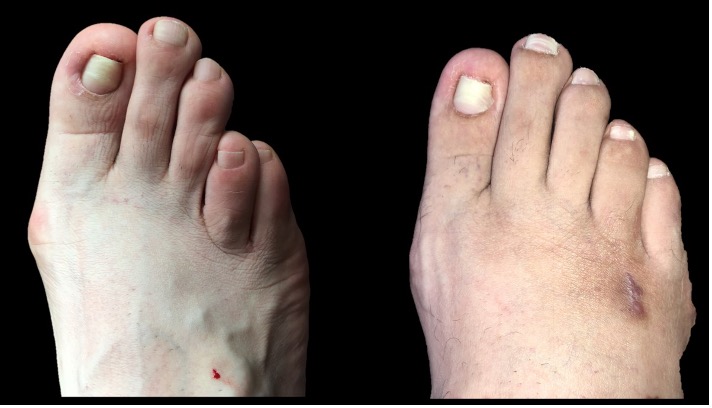What is Brachymetatarsia?

Why do elderly people fall and break bones easier than young people?
May 1, 2024
What’s the difference between a podiatrist and orthopedic physician?
May 1, 2024Brachymetatarsia surgery is a surgical procedure performed to correct a condition called brachymetatarsia. Brachymetatarsia is a congenital or acquired foot deformity characterized by the shortening of one or more metatarsal bones in the foot. Metatarsals are the long bones that connect the toes to the midfoot.
In individuals with brachymetatarsia, one or more metatarsals fail to grow to their normal length, leading to an imbalance in the foot’s structure and function. This can cause various issues, such as:
- Pain and discomfort in the affected foot.
- Difficulty walking and balancing due to the altered weight distribution.
- Abnormal gait patterns.
- Corns and calluses due to increased pressure on the shortened metatarsal.
- Appearance concerns, as the affected toe(s) may appear shorter than the others.
Brachymetatarsia surgery is typically considered when conservative treatments, such as shoe inserts or pads, do not provide adequate relief, or when the deformity significantly affects the individual’s quality of life.
The surgical procedure involves lengthening the shortened metatarsal bone to bring it to a more appropriate length, aligning the toes and restoring the foot’s normal structure and function. There are different surgical techniques used to address brachymetatarsia, including:
- Bone Lengthening: This technique involves making an incision in the affected metatarsal bone and using external or internal fixation devices to gradually lengthen the bone over time. This allows the bone to heal and grow longer.
- Bone Grafting: In some cases, bone grafts may be used to augment the length of the shortened metatarsal. The bone graft may be taken from another part of the patient’s body or obtained from a bone bank.
- Osteotomy: This involves cutting the shortened metatarsal bone and repositioning it to achieve the desired length and alignment. Fixation devices, such as screws or plates, may be used to hold the bone in place as it heals.
Recovery from brachymetatarsia surgery can vary depending on the specific procedure performed and the patient’s individual healing process. Physical therapy and rehabilitation exercises are often recommended to aid in the recovery and restoration of foot function.
It’s important to note that brachymetatarsia surgery is a complex procedure and should be performed by a skilled and experienced orthopedic or foot surgeon. Before considering surgery, the patient’s overall health, age, severity of the deformity, and lifestyle factors are carefully evaluated to determine the most suitable treatment approach.



